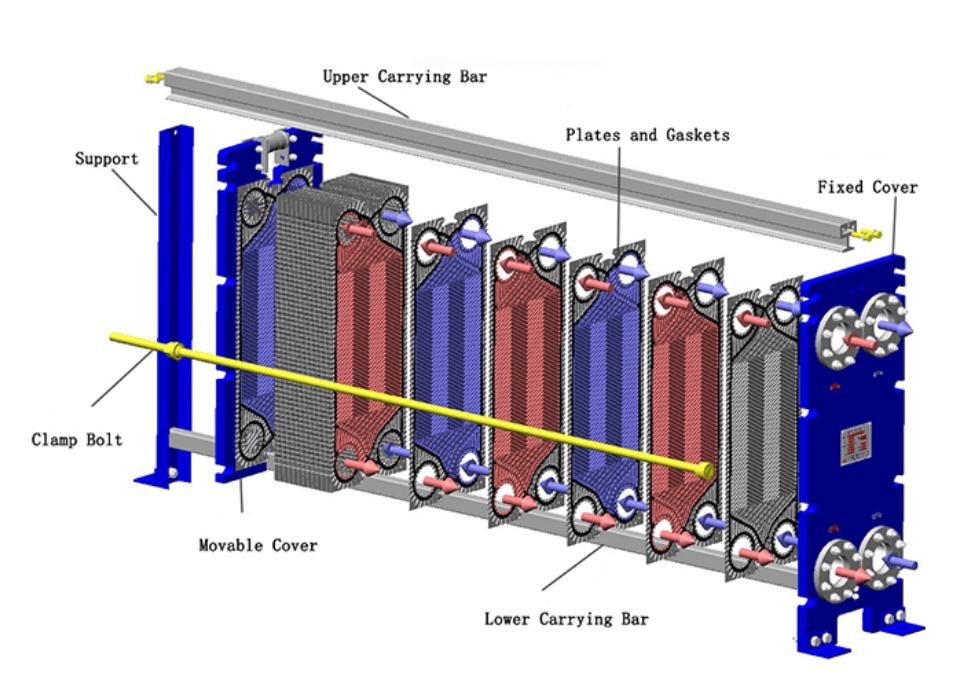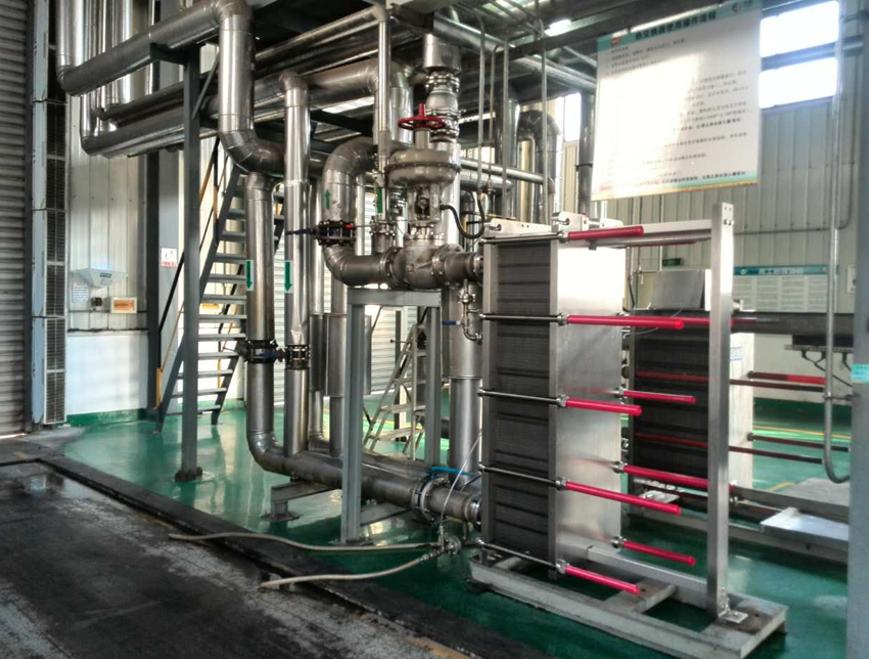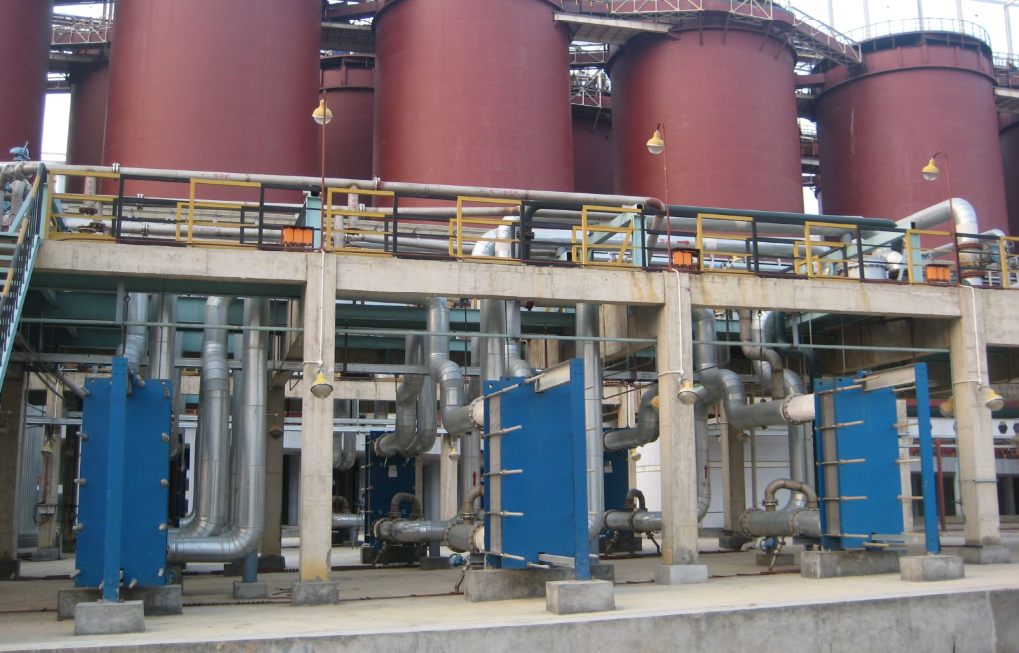The Superiority of Plate Heat Exchangers in Modern Applications
What Is a Plate Heat Exchanger and How It Works
A plate heat exchanger (PHE) is a device engineered to transfer thermal energy between two fluids without allowing them to mix. It comprises a series of thin, corrugated metal plates that create separate channels for each fluid. These plates are assembled in a frame, forming parallel flow paths that facilitate efficient heat exchange. The design ensures a large surface area within a compact footprint, making PHEs highly effective in various industrial applications.
In a PHE heat exchanger, alternating plates guide hot and cold fluids through separate channels, allowing heat to transfer through the metal surfaces without direct contact between the fluids. The corrugated pattern of the plates induces turbulence, enhancing the heat transfer coefficient and ensuring uniform temperature distribution. This turbulent flow minimizes thermal resistance and promotes efficient energy exchange, adhering to the principle of driving energy flow until equilibrium is reached.
What a Plate Heat Exchanger Consist of
The primary components of a PHE include:
Plates: Thin metal sheets, often made of stainless steel or titanium, featuring corrugations to increase surface area and induce turbulence.
Gaskets: Elastomeric seals placed along the plate edges to prevent fluid leakage and direct the flow within designated channels.
Frame: A sturdy structure that holds the plates together, typically consisting of a fixed head, a movable follower, and tie bolts to maintain compression.
Connections: Inlet and outlet ports that facilitate the entry and exit of fluids into the heat exchanger.

Comparing Plate type Heat Exchangers to Other Heat Exchanger Types
When juxtaposed with shell-and-tube heat exchangers, PHEs offer distinct advantages. Shell-and-tube designs consist of a series of tubes enclosed within a cylindrical shell, where one fluid flows through the tubes and another around them. While robust, these exchangers often require more space and may exhibit lower heat transfer efficiency due to less surface area contact. In contrast, PHEs provide a more compact solution with enhanced thermal performance.
Higher Heat Transfer Efficiency
The corrugated plate design in industrial heat exchanger creates turbulent flow, significantly increasing the heat transfer coefficient. This results in up to five times greater efficiency compared to traditional shell and tube exchangers, allowing for optimal energy utilization and reduced operational costs.
Compact Design
PHEs are renowned for their compactness. The arrangement of thin plates allows for a large surface area within a minimal footprint, making them ideal for installations where space is constrained without sacrificing performance.
Scalability and Flexibility
The modular nature of PHEs permits easy expansion or reduction of capacity by adding or removing plates. This flexibility enables industries to adapt to varying process requirements and scale operations efficiently.
Low Fluid Volume Requirement
Due to the reduced volume of fluid contained within the plates, PHEs can respond more rapidly to temperature fluctuations. This characteristic is particularly beneficial in processes requiring precise thermal control.
Energy Efficiency and Cost Savings
The high thermal efficiency of PHEs ensures maximum heat recovery, leading to significant energy savings. By effectively transferring heat between fluids, less energy is required to maintain desired process temperatures.
The design of PHEs minimizes thermal losses by ensuring a large surface area for heat transfer and promoting turbulent flow, which enhances heat recovery and improves overall system performance.
Constructed with corrosion-resistant materials and designed for easy maintenance, PHEs offer longevity and reliability. Their durability translates to lower lifecycle costs and reduced downtime.
How Gasketed Plate Heat Exchangers Improve Maintainability
Gasketed PHEs are designed for straightforward disassembly, allowing for easy access to individual plates for inspection, cleaning, or replacement. This accessibility simplifies maintenance routines and reduces associated labor costs.
Applications of Plate Heat Exchangers
Oil and Gas Industry
In the oil and gas sector, PHEs are utilized for processes such as crude oil heating, gas dehydration, and cooling of various fluids. Their compact design and high efficiency make them suitable for offshore platforms and refineries where space and weight are critical considerations.
Food and Beverage Industry
PHEs play a vital role in pasteurization, fermentation temperature control, and other thermal processes within the food and beverage industry. Their ability to maintain strict hygiene standards and facilitate easy cleaning is essential in this sector.

Chemical and Pharmaceutical Processing
The chemical and pharmaceutical industries benefit from PHEs in applications involving heating, cooling, and condensing of various chemical compounds. The precise temperature control and material compatibility of PHEs are crucial for maintaining product integrity.
Metallurgy Industry
In metallurgy, PHEs are employed for cooling molten metals, heat recovery in smelting processes, and temperature regulation in metal treatment baths. Their robustness and efficiency contribute to improved process control and energy conservation.

New Energy Industry
In the burgeoning field of renewable energy, plate heat exchangers (PHEs) are integral to enhancing the efficiency and sustainability of various systems.
Geothermal Energy: PHEs facilitate the transfer of heat from geothermal fluids extracted from beneath the Earth's surface to secondary fluids that drive turbines for electricity generation. Their robust design ensures efficient heat transfer while preventing contamination from corrosive minerals present in geothermal fluids.
Solar Thermal Systems: In concentrated solar power (CSP) plants, PHEs transfer heat from solar-heated working fluids to water, generating steam that drives turbines for electricity production. Their high thermal efficiency and compact design make them ideal for maximizing energy capture in solar applications.
Wind Power: PHEs are employed in wind power installations for cooling purposes, such as cooling lubricating oil, transmissions, and generators in both onshore and offshore wind farms. Their compact and efficient design ensures optimal performance and reliability in these applications.
Biomass Energy: In biomass energy systems, PHEs transfer heat from the combustion of biomass fuels to a heat transfer fluid, which can then be used for space heating, water heating, or process heating in industrial applications. Their efficiency enhances the overall energy utilization of biomass systems.
Offshore Industry
In offshore environments, where space and weight are at a premium, PHEs offer compact and efficient solutions for various heat transfer needs.
Seawater Cooling Systems: PHEs are utilized to cool closed-loop systems using seawater as the cooling medium. Their corrosion-resistant materials and efficient heat transfer capabilities make them well-suited for the harsh marine environment.
HVAC Systems: Offshore platforms and vessels employ PHEs in their heating, ventilation, and air conditioning systems to maintain comfortable and safe working conditions. The compact design of PHEs is particularly advantageous in the confined spaces typical of offshore installations.
Power Industry
In power generation, PHEs contribute to improved efficiency and reliability across various applications.
Cooling of Lubricating Oil: PHEs are employed to cool lubricating oil in turbines and generators, ensuring optimal operating temperatures and prolonging equipment life.
Heat Recovery Systems: PHEs facilitate the recovery of waste heat from exhaust gases or other processes, enhancing overall plant efficiency by repurposing this energy for heating or additional power generation.
District Heating and Cooling: PHEs are integral to district energy systems, transferring heat between central plants and end-user buildings. Their efficiency and compact design make them ideal for urban environments where space is limited.
Why Plate Heat Exchangers Are the Preferred Choice for Efficiency and Reliability
Plate heat exchangers have established themselves as indispensable components across a multitude of industries due to their superior heat transfer efficiency, compact design, and adaptability. Their ability to provide rapid temperature responses, coupled with energy and cost savings, makes them a prudent investment for modern applications. By understanding their operational principles, advantages, and maintenance considerations, industries can harness the full potential of PHEs to achieve optimal performance and sustainability.
Shanghai Heat Transfer Equipment Co., Ltd. specializes in the design, manufacturing, installation, and service of plate heat exchangers and complete heat transfer systems.
If you need further consultation and discussion, please feel free to contact us.




